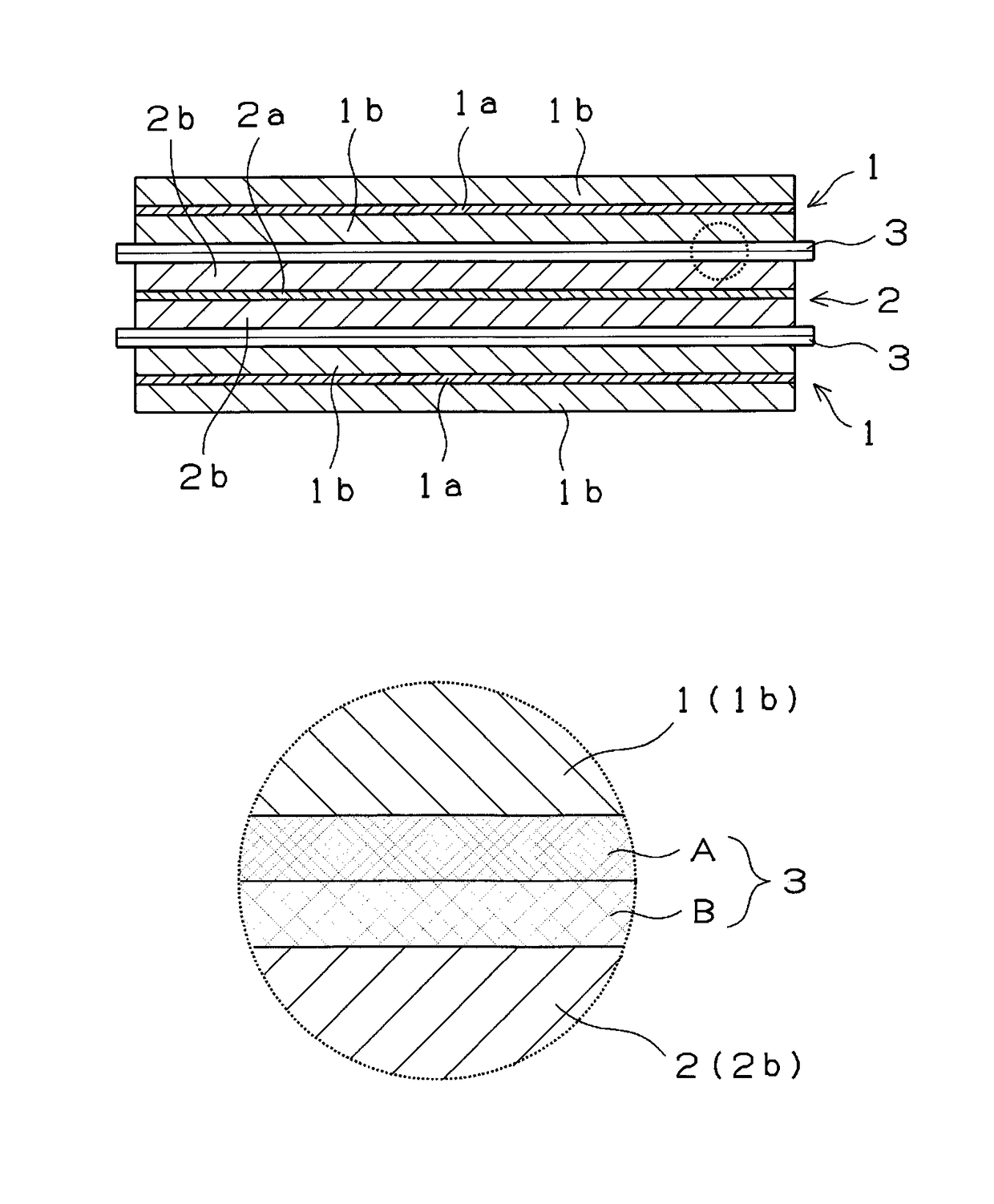Electrolyte holder for lithium secondary battery and lithium secondary battery
a lithium secondary battery and lithium secondary battery technology, applied in the direction of wound/folded electrode electrodes, cell components, sustainable manufacturing/processing, etc., can solve the problem of insufficient measure for prolonging the life of lithium secondary batteries, and achieve the effect of preventing the occurrence of electrolyte shortage, high porosity, and easy migration
- Summary
- Abstract
- Description
- Claims
- Application Information
AI Technical Summary
Benefits of technology
Problems solved by technology
Method used
Image
Examples
example 1
[0050]The cathode of the lithium secondary battery was produced by a method described below.
[0051]Olivine type lithium iron phosphate, the surface of which was coated with conductive carbon whose secondary particle diameter was 2 to 3 μm was used as a positive electrode active substance. Eight parts by weight of a conductive agent consisting of a mixture of conductive carbon and conductive carbon composite and six parts by weight of a binding agent consisting of vinylidene polyfluoride were added to 86 parts by weight of the above-described active substance. As a dispersion solvent, N-methylpyrrolidone was added to the mixture of the positive electrode active substance, the conductive agent, and the binding agent. The components were kneaded to prepare a cathode mixed agent (positive electrode slurry). An aluminum foil having a thickness of 20 μm and a width of 150 mm was prepared. The positive electrode slurry was applied to both surfaces of the aluminum foil and dried. Thereafter ...
example 2
[0058]A battery similar to that of the comparative example 1 was experimentally produced by using the cathode and anode of the example 1 and a two-layer separator, consisting of cellulose fibers, which served as the electrolyte holder and had an average porosity of 70%. One fibrous layer forming the interface between it and the positive electrode had a porosity of 80% and a thickness of 30 μm. The other fibrous layer forming the interface between it and the negative electrode had a porosity of 60% and a thickness of 30 μm. In consideration of safety, one polyolefin film layer was interposed between the two fibrous layers and pasted thereto. The obtained separator or electrolyte holder had a total thickness of 80 μm.
[0059]The discharge capacity of each of five kinds of the batteries of the example 1 and 2 and the comparative examples 1 through 3 was measured by flowing constant currents of 0.5 A and 15 A therethrough until the voltage thereof dropped to 2.0V to calculate the ratio of...
PUM
| Property | Measurement | Unit |
|---|---|---|
| porosity | aaaaa | aaaaa |
| porosity | aaaaa | aaaaa |
| porosity | aaaaa | aaaaa |
Abstract
Description
Claims
Application Information
 Login to View More
Login to View More - R&D
- Intellectual Property
- Life Sciences
- Materials
- Tech Scout
- Unparalleled Data Quality
- Higher Quality Content
- 60% Fewer Hallucinations
Browse by: Latest US Patents, China's latest patents, Technical Efficacy Thesaurus, Application Domain, Technology Topic, Popular Technical Reports.
© 2025 PatSnap. All rights reserved.Legal|Privacy policy|Modern Slavery Act Transparency Statement|Sitemap|About US| Contact US: help@patsnap.com

